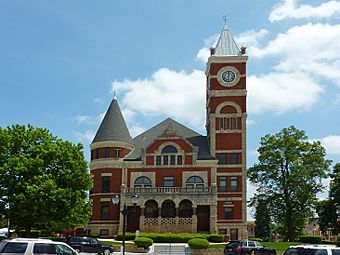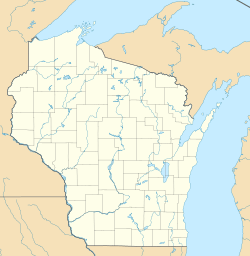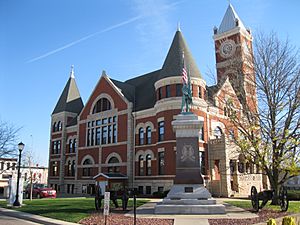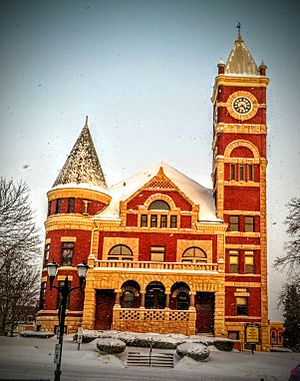Green County Courthouse (Wisconsin) facts for kids
Quick facts for kids |
|
|
Green County Courthouse
|
|

West side of the courthouse
|
|
| Location | Courthouse Sq., Monroe, Wisconsin |
|---|---|
| Area | 2.1 acres (0.85 ha) |
| Built | 1891 |
| Architect | G. Stanley Mansfield |
| Architectural style | Richardsonian Romanesque |
| NRHP reference No. | 78000097 |
| Added to NRHP | March 21, 1978 |
The Green County Courthouse is an important building in Monroe, Wisconsin. It's where the local government for Green County does its work. This beautiful building was finished in 1891. It was designed by an architect named G. Stanley Mansfield in a style called Richardsonian Romanesque. The courthouse is so special that it was added to the National Register of Historic Places in 1978.
History
Before this courthouse was built, Green County's government used a hotel in Monroe called the American House. In 1844, the county opened its first official courthouse. This building was two stories tall and built in the Greek Revival style. It stood where the current courthouse is now.
As the county grew, it needed a bigger space. In 1891, the new courthouse was built. Monroe had to work hard to keep the county government in its town, as another town, Monticello, also wanted to be the county seat. Since 1891, the Green County Courthouse has been the main place for county government. It was officially listed on the National Register of Historic Places on March 21, 1978.
Architecture
The Green County Courthouse was designed by architect G. Stanley Mansfield. He was known for designing courthouses, like the one in Clinton County, Iowa. The building is made of red brick and limestone. These materials are common in the Richardsonian Romanesque style.
The courthouse is two and a half stories tall. A tall clock tower, about 120-foot (37 m) high, stands on the southwest corner. Smaller towers are on the other three corners. The main entrances on the east and west sides have limestone porches. The doorways and windows on the north and south sides have heavy limestone arches. These arches are a common feature of Romanesque buildings.
The courthouse is located on a special square. This square also has a memorial for the American Civil War. The square is surrounded by the downtown area of Monroe.
Inside one of the courtrooms, you can see two paintings by artist Franz Rohrbeck. He was a German artist who painted murals in government buildings across the Midwest. These two paintings are smaller oil murals, each about 8 by 11 feet (2.4 by 3.4 m) in size. They show ideas related to justice.





